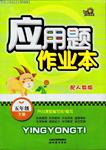Dear Reader,
I receive many letters from children and can’t answer them all—there wouldn’t be time enough in a day.That is why I am sending you this printed reply to your letter.I’ll try to answer some of the questions that are commonly asked.
Where did I get the idea for Stuart Little and for Charlotte’s Web? Well, many years ago I went to bed one night in a railway sleeping car, and during the night I dreamed about a tiny boy who acted rather like a mouse.That’s how the story of Stuart Little got started.
As for Charlotte’s Web, I like animals and my barn(谷仓)is a very pleasant place to be, at all hours.One day when I was on my way to feed the pig, I began feeling sorry for the pig because, like most pigs, he was doomed to die.This made me sad.So I started thinking of ways to save a pig’s life.I had been watching a big grey spider at her work and was impressed by how clever she was at weaving.Gradually I worked the spider into the story that you know, a story of friendship and salvation(拯救)on a farm.Three years after I started writing it, it was published.(I am not a fast worker, as you can see.)
Sometimes I’m asked how old I was when I started to write, and what made me want to write.I started early—as soon as I could spell.In fact, I can’t remember any time in my life when I wasn’t busy writing.I don’t know what caused me to do it, or why I enjoyed it, but I think children often find pleasure and satisfaction in trying to set their thoughts down on paper, either in words or in pictures.I was no good at drawing, so I used words instead.As I grew older, I found that writing can be a way of earning a living.
Some of my readers want me to visit their school.Some want me to send a picture, or an autograph, or a book.And some ask questions about my family and my animals and my pets.Much as I’d like to, I can’t go visiting.I can’t send books, either—you can find them in a bookstore or a library.Many children assume that a writer owns (or even makes) his own books.This is not true—books are made by the publisher.If a writer wants a copy, he must buy it.That’s why I can’t send books.And I do not send signatures—I leave that to the movie stars.I live most of the year in the country, in New England.From our windows we can look out at the sea and the mountains.I live near my married son and three grandchildren.
Are my stories true, you ask? No, they are imaginary tales, containing fantastic characters and events.In real life, a family doesn’t have a child who looks like a mouse; in real life, a spider doesn’t spin words in her web.In real life, a swan doesn’t blow a trumpet.But real life is only one kind of life—there is also the life of the imagination.And although my stories are imaginary, I like to think that there is some truth in them, too—truth about the way people and animals feel and think and act.
Yours sincerely:E.B.White
1.The author wrote the letter because _________.
A.he is not a fast worker
B.he was invited to answer the questions
C.he didn’t have enough time to answer all the letters
D.he felt sorry for not being able to send books to his readers
2.What probably caused the writer to get interested in writing children’s book?
A.Writing can be a way to earn his living.
B.The fact that he was not good at drawing.
C.His mother influence on his childhood.
D.The instinct of children.
3.From Para.5, we can learn that ____.
A.many famous people like to visit schools
B.movie stars will send autographs to readers
C.many people think authors have copies of their own books
D.the author lives with his married son and three grandchildren
4.In the last paragraph, the author is trying to tell us ____ .
A.we only have one kind of life
B.there is no truth in imaginary tales
C.imaginary tales are based on our true life
D.fantastic characters and events only exist in imaginary tales
 应用题作业本系列答案
应用题作业本系列答案
